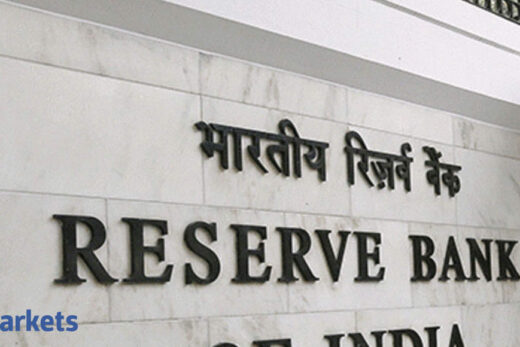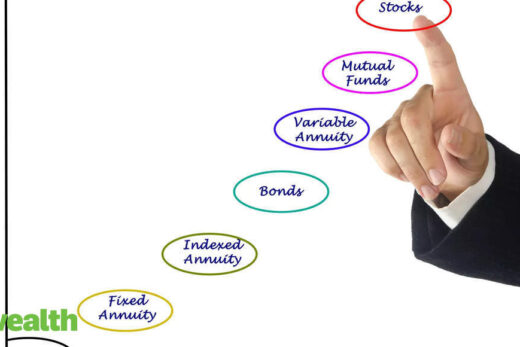Why are markets not giving you clear signals? Three months ago the scare was inflation, inflation, inflation. Now given the bond yield rally in the US market, the fear is all about growth. Markets need to make up their mind. Why is that not happening?
You are correct. This is probably the biggest dilemma in the market today that equities and bonds globally are behaving very differently. Bond yields in the US have got down 40-50 bps whereas equities, even cyclical stocks have corrected a bit. Our base case is that this US bond yield fall is just the correction because it went up from 0.5 to 1.6-1.7 fairly quickly. I know 30-40 bps is too large to be just a minor correction but clearly the logic seems to be still that a lot of regions are opening up. Vaccinations, if not working on cases, definitely in terms of death rates and hospitalisation rates, are working. The base case has to be that the emerging market like India and Brazil which got affected by the second wave has joined the growth party and global growth should be strong.
We are going with the view that there is a fairly perfect macro combination. There is strong global growth, low interest rates — both nominal and real — in India. There is consumption and pent-up demand of 15 months and pent-up demand for capex of seven-eight years. There is a banking system which is cleaned out of most of the issues. Growth seems a better bet than deflation at this point of time. Of course, you want to be nimble and monitor whether the US bond yields fall more. I cannot see anything to be pessimistic about growth. The real time data on global growth is quite strong. So I would still go with the view that both global growth and India growth in particular, will revive.
There are two pockets – one where there is stress and second where there is excitement. IT stocks have gone gangbusters and pharma stocks have gone through the floor. Are markets right in assuming that pharma companies will have a drop in the earnings?
Overall, we are not very hot on pharma in the sense that the stock did very well in 2020. In the immediate aftermath of the first Covid wave, most of the stocks doubled or tripled. Now the US generic pricing pressures have revived. On the domestic side, growth is okay. Adjusted for Covid, if you see five-year growth, even domestic growth has not been great. Online pharmacy has got diagnostics, hospital chain today is seen as a visible play on pharmacy and diagnostics. So there is a lot of churn going around. I do not think there is a big cycle unless they correct a lot. Maybe there is too much pessimism about US generic prices. We can look at them as a big upside play but at this point we are neutral-ish on the whole space.
When you see the success of Zomato, it makes you wonder because traditional investors always look at cash flow and dividend yield. When you stick to that old form of valuing, then are we missing on something exciting and new. When FAANG stocks went public, question marks were raised about Amazon, Facebook and Netflix. But today, at least the first two are a trillion dollar market cap companies!
I agree. A lot of people compare it to the 2000 tech boom and bust. But 2000 was about companies that did not take off. Now you are seeing business models which are changing consumer behaviour. The whole narrative on growth stocks cannot necessarily be only cash flow and near term growth. You have to look at unit economics and at what the earnings will be maybe five-six years down the line and then size it up. You could still find the stock expensive but you cannot say there are no earnings in the last three years. How can this stock be worth one lakh crore? I think that is not the right way to approach these stocks.
It needs a lot of hard work, a lot of research and you have to look out for five-six years and see what happens to the EBITDA and cash flow. We have seen a lot of these plays which are working in ecosystems that are exploding. It is not just the visible business that you need to probably value because a lot of these companies will go into adjacent categories. They will do some M&A. Google had its IPO in 2004. You would not know the amount of acquisitions they did, how they monetise. They bought YouTube, etc. So there will always be a premium if a particular space is exploding. Whether the management or company can create value by going into adjacent areas or buying out something cheap and then integrating it well, has to be seen.
In the last couple of months, we have seen a reversal of sorts. Pharma was doing well, it is now stagnating. For PSUs, the July series has not been that great. Do you think that all of the positives now are in the money and this is the best IT performance that we have seen?
Yes, it will be difficult to argue for much re-ratings. In IT, till about one or two years back, one took the long term growth rate of industry and it was a downward sloping chart. Partially why it has got rerated is because growth which had bottomed out, maybe has picked up a bit. The thesis is that the industry in 10 years will have 2-3% growth from zero growth. So, first of all, maybe there is more optimism around that.
Second point is related to the fact that IT always had super cash flows. So when there is a whole long term growth question, people have got more optimistic and that rerating was natural.
Thirdly from the digital usage perspective, the demand outlook is better and there is also some geopolitics angle here with India coming closer to the US, some of the regulatory threats may get diluted in future. So, a lot of good things have happened with IT. There was some cost saving using work from home and they will still remain marginally positive. Free cash flows look good if we believe that the global economy and domestic economy is going to do well and demand should not be a problem. We also have a lot of stock buybacks. So, there is demand for the stock as well. Big return may not be possible but growth at a reasonable price for the sector is a shade better.
Apart from financials, materials, industrials have a big weightage in your portfolio. Inflationary pressure does not seem to be showing any signs of abating at least for those costs that are specific to materials and industrials. Do you see profit pressure going forward for the next few quarters?
I am worried about two things. Of these, I am not so worried about cost and inflation. The reason is in India, a lot of inflation is related to food, fuel and real estate. I honestly think pricing of these three big items should not have any big compounded growth rate on a two-three years basis because fuel is unlikely to go beyond $80/ barrel.
As for food inflation, India has sufficient production of rice and wheat. FCI stocks are very high and so it is more a matter of policy choice rather than a shortage of production. Also, coming to real estate prices, we are positive on volumes going up and velocity of business but rental yields are down and real estate prices in next two to three years will go up a lot. So in an environment, where oil will remain flat for three years; rice, wheat are sufficient, there is productivity gain in agriculture and if real estate prices are up, I am not so worried about the cost part. We have probably peaked out. The only thing that is a cause for concern is growth. If the global growth drops a lot, then even India growth gets affected.
Ultimately while top down elements are there, we are yet to see momentum in bank credit for say car sales. If in the next six months, a lot of these parameters do not show momentum, then we will have a lot to worry about.
Tell us about your flexi cap fund. One senses that there is a high exposure to small and midcap stocks there. Why is that?
We are very excited about this product because this fund gives a lot of flexibility and one can easily move between largecaps, midcaps and small caps. We have seen there are 2-3-year phases where each of these segments leads the markets. If one can ride those phases, the potential to create return and alpha is much more than some other categories.
On the fund structure, generally we feel that we will have a bit more of mid and small cap across the cycle versus a lot of other funds. I just think that it is just going to be a more vibrant space especially given the two megatrends that we are seeing. One is the whole technology disruption trend affecting a lot of sectors from auto, retailing, power everything. So we will see new business models, aggregators,
, ecommerce, gaming. A lot of stuff is happening on the technology side in the mid and small cap space.
The second megatrend is this whole manufacturing shift which is expanding into new segments. After chemicals, electronic manufacturing, we are seeing a lot of positive tailwinds for textiles, steel etc. So there is a lot of churn happening in the corporate space which will get reflected in the mid and small cap space.
Also, if our thesis on growth coming back works out, generally mid and small caps have more operating and financial leverage. India has been growing below potential for almost seven, eight years now and that phase has led to the largecap space becoming dominated by defensive business models, whether it is staples or pharma, IT etc. Now if growth comes back, a lot of other sectors’ earnings should be impacted more. As of now, it is a hypothesis based on a lot of top down positive bets, but let us see if that works out, the mid and small cap space will get another leg to outperform.
Is that the approach the retail investors need to have right now because one has got to be market cap agnostic? But don’t individual stories in the small and midcap universe tend to be risky?
In terms of outperformance mid and small cap may outperform going forward. For the retail investor and probably every investor, the Holy Grail is good asset allocation and one has to have the discipline. There is a lot of feeling that the market has gone up a lot since March 2020, but on a three, four year basis, not very extraordinary returns have manifested in the market.
So it is not the time to be either too underweight or overweight on the base asset allocation. Whatever strategic asset allocation one has in equities, one has to have discipline to maintain that. That is very important at this point of time.



